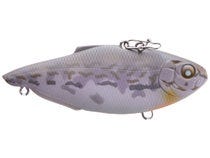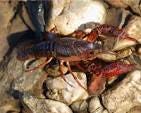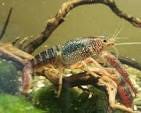Why Are Lipless Crankbaits So Effective in the Early Spring?
Are All Lipless Crankbaits Created Equally?
Spring will be here before we know it but some anglers are already breaking out the Lipless Crankbait in lieu of the Squarebill this season given the water conditions and the impacts of all winter weather we have experienced thus far. While you may not find the Lipless listed in too many “TOP Baits for February” make no mistake they can highly effective even before Spring arrives especially when we get that first break of a warming trend where temps rise from below 40 and into the 60’s which is what we will be experiencing in the first week of February.
Why Lipless Crankbaits Are Effective for Smallmouth Bass in River Systems
Lipless crankbaits are highly effective for Smallies in river systems during early spring due to their ability to cover large areas of water quickly, trigger reaction strikes, and maintain depth control in varying current speeds. Their tight, aggressive vibration mimics distressed baitfish, making them particularly deadly when bass are feeding aggressively or transitioning between wintering holes and spawning flats.
Key River Conditions That Make Lipless Crankbaits Effective:
Pre-Spawn Movements: In early spring (water temps 45–55°F), Smallies begin moving from their deep wintering areas or holes to shallower flats and rocky banks. Lipless cranks are ideal for covering transition zones such as channel swings, current seams, and eddies as well as outside seams that present themselves in the current.
Current Breaks & Ambush Points: Smallies position near current seams, breaks, behind boulders, bridge pilings, or submerged timber. Lipless crankbaits allow you to cast past these areas and retrieve through the strike zone to entice Smallies that either will strike or follow lipless cranks before striking from behind.
Forage Imitation: Lipless cranks resemble shad, crawfish, and baitfish that are common smallmouth prey in early spring, making them an easy target in cold water.
MYTH— That ONLY RED crankbaits work for Bass in the Spring!! This one is probably one of the bigger ones. Natural colors are just as effective but it just so happens that you have far more people conditioned b to throw “red” in the early spring that it compounds the myth bu we have tested this out over the years and found that its more about the feeding pattern than the color of your bait in this respect as bass look to replenish stored energy. Bass will obviously hit “red” baits but they will also hit the natural coloration patterns of the forage just as much.
We must accept that that all parts of the country are the same and when you have fishing media like You Tubers and such concentrated in places like Texas or California those baits do not always translate where there are no like forage species for bass to associate with.
For example, while the Red Swamp Crayfish of Louisiana (above) is most certainly red throughout most its life cycle not all crayfish like those in that are native to the Mid-Atlantic or Northeast (below) are red or even get red.
See this post:
Crayfish 101: The Things To Know
The river systems are turning over again as we approach the end of March. Many have been playing the yo yo game for weeks now. The increased water levels and change in water clarity in many areas will play a direct role in the weeks to come as it influences the factors within the river ecosystem that impact catch rates for Smallmouth.
Differences in Lipless Crankbait Design and Action
Not all Lipless crankbaits are the same—different designs affect their vibration, sound, and sink rate. There are major differences in the design, action and even shape of JDM- Japanese styles compared to manor U.S. brands.
1. Vibration & Wobble
Tight-Wobbling Models: Best for cold water (45–50°F) as they produce a subtle action that triggers lethargic bass.
Wide-Wobbling Models: More aggressive wobble works well as the water warms (50–55°F).
2. Sound Profiles
Loud Rattles: Most Lipless cranks feature BB-style rattles or one-knocker sounds that help bass locate them in stained/murky water.
Silent Models: Effective in clear water where bass rely more on sight than sound or when near the end of Spring after bass have been over conditioned to the sound and have become even more opportunistic.
3. Sink Rate & Weight Distribution
Fast-Sinking Baits (Denser Weighting): Great for deep current areas where you need to get down quickly. JDM- Japanese often fall into this category because of the depth of most fisheries in Japan.
Slow-Falling Baits: Better for shallow, slow-retrieve presentations where cadence becomes a critical part in enticing strikes.
Best Water Clarity & Temperature for Lipless Crankbaits
Water Temperature:
45–55°F is the prime range for Lipless cranks in early spring.
Below 45°F, bass may prefer slower, less aggressive lures.
Above 55°F, a mix of Lipless and other reaction baits like squarebills becomes effective.
Water Clarity:
Stained to Slightly Murky (1–3 feet visibility): Best for rattling models.
Clear Water (>3 feet visibility): Use more natural colors and silent lipless cranks.
Muddy Water (<1 foot visibility): Opt for bright colors (red, chartreuse) and loud rattles.
Best Techniques for Casting & Retrieving Lipless Crankbaits
To maximize success with Lipless crankbaits, use these (5) key retrieval methods:
1. Yo-Yo Retrieve (Best for Cold Water 45–50°F)
Let the bait sink to the bottom, then lift your rod tip and let it flutter back down.
This mimics a dying baitfish or crawfish and triggers reaction bites.
2. Slow & Steady Retrieve (Best for Slightly Warmer Water 50–55°F)
A slow, constant retrieve keeps the bait in the strike zone longer.
Works well in moderate currents and along deep banks.
3. Stop-and-Go Retrieve
Reel steadily, then pause to let the bait drop slightly before resuming.
This change in movement often triggers strikes.
4. Bumping Rocks & Cover
Drag or bounce the lipless crankbait off rocks, gravel, or wood cover to create erratic movement.
This mimics crawfish or baitfish scurrying along the bottom.
5. Burning in Shallow Water
In 3–5 feet of water, speed up the retrieve to trigger aggressive pre-spawn bass.
Final Tips to Increase Catch Rates
Use Brown/Green or Crawfish Colors in Early Spring: Smallies feed heavily on crawfish when water is cool BUT remember that early season Crayfish are rarely red in most parts of the country especially in the Mid Atlantic area where they may develop reddish hinge later in the year.
Adjust Hook Size for Better Hookups: Swap factory treble hooks for sharper, slightly larger ones often running two different sizes. Smaller treble at head and larger in tail. Often times using a red treble in the back is highly effective.
Fish Wind-Blown Banks: Wind concentrates baitfish and increases reaction bite potential.
Match Retrieve to Water Temperature: Slower retrieves in cold water, faster as it warms.
By applying these simple techniques, you’ll maximize your success with Lipless crankbaits in Smallie river systems for early Spring Smallmouth as well as Largemouth if you are targeting those as well.
Resources:
You Tube:
Smallie Chaser River Bassin:
You Tube: https://www.youtube.com/@TheSmallieChaserChannel
J.L. Scott Fishing
You Tube: https://www.youtube.com/@J.L.ScottFishing
TourneyX: Clubs (Virginia) Tournament Fishing App
https://tourneyx.com/app/category/va---smallie-chaser-river-bassin
Community DISCORD: Free To Join (Smallmouth Series)
https://discord.gg/KtpkAJchUP









